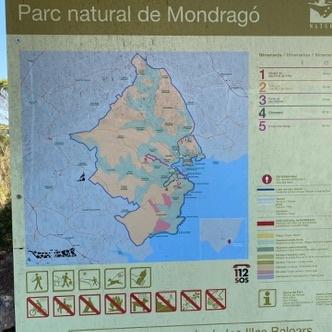Are there any conservation areas in Mallorca that protect species dependent on certain geological features?
Similar Topics
mallorca conservation areas
serra de tramuntana
limestone cliffs habitat
karst formations species
s'albufera de mallorca
coastal wetlands
submerged marine caves
endemic species protection
Mallorca, the largest island in the Balearic archipelago, is home to several conservation areas that protect a wide range of species, many of which depend on unique geological features. One prominent example is the Serra de Tramuntana mountain range, a UNESCO World Heritage site renowned for its rugged limestone cliffs, terraces, and karst formations. These geological structures create diverse microhabitats that support a variety of endemic plant species as well as animals adapted to the rocky environment. The caves and crevices in this region provide shelter for bats and rare reptiles, while the steep slopes are home to specialized bird species such as the endangered Balearic shearwater.
Another significant conservation area is the Parc Natural de s'Albufera de Mallorca, which, although more of a wetland ecosystem, is closely tied to the island’s coastal and sedimentary geological features. This park safeguards numerous migratory and resident bird species that rely on the wetlands formed by ancient marine deposits and freshwater influences. The interplay of sand and clay substrates here supports unique marsh vegetation and amphibian species, emphasizing the role of geology in shaping biodiversity.
Furthermore, the protected marine areas around Mallorca also illustrate the connection between geological formations and species preservation. Submerged caves and rocky reefs formed by the island's volcanic and sedimentary history provide habitats for diverse marine life, including vulnerable fish and invertebrates. These protected zones not only sustain the ecological balance but also contribute to the island's rich natural heritage, while offering visitors opportunities for responsible ecotourism.
In summary, Mallorca’s conservation sites are often established because of the distinctive geological features that foster specialized habitats. From limestone mountains to coastal wetlands and underwater caves, these natural formations are essential for the survival of many endemic and sensitive species. Efforts to preserve these areas highlight the intricate relationship between geology and biodiversity on the island, ensuring that Mallorca’s natural beauty and ecological significance endure for future generations.
Another significant conservation area is the Parc Natural de s'Albufera de Mallorca, which, although more of a wetland ecosystem, is closely tied to the island’s coastal and sedimentary geological features. This park safeguards numerous migratory and resident bird species that rely on the wetlands formed by ancient marine deposits and freshwater influences. The interplay of sand and clay substrates here supports unique marsh vegetation and amphibian species, emphasizing the role of geology in shaping biodiversity.
Furthermore, the protected marine areas around Mallorca also illustrate the connection between geological formations and species preservation. Submerged caves and rocky reefs formed by the island's volcanic and sedimentary history provide habitats for diverse marine life, including vulnerable fish and invertebrates. These protected zones not only sustain the ecological balance but also contribute to the island's rich natural heritage, while offering visitors opportunities for responsible ecotourism.
In summary, Mallorca’s conservation sites are often established because of the distinctive geological features that foster specialized habitats. From limestone mountains to coastal wetlands and underwater caves, these natural formations are essential for the survival of many endemic and sensitive species. Efforts to preserve these areas highlight the intricate relationship between geology and biodiversity on the island, ensuring that Mallorca’s natural beauty and ecological significance endure for future generations.
🧩 Related Questions
Related Question
What role does the Catalonia emblem play in representing regional identity at official events?
Related Question
What impact does water scarcity have on rural communities in Mallorca during dry months?
Related Question
What are the environmental advantages of using cover crops in Mallorca’s olive farming?
